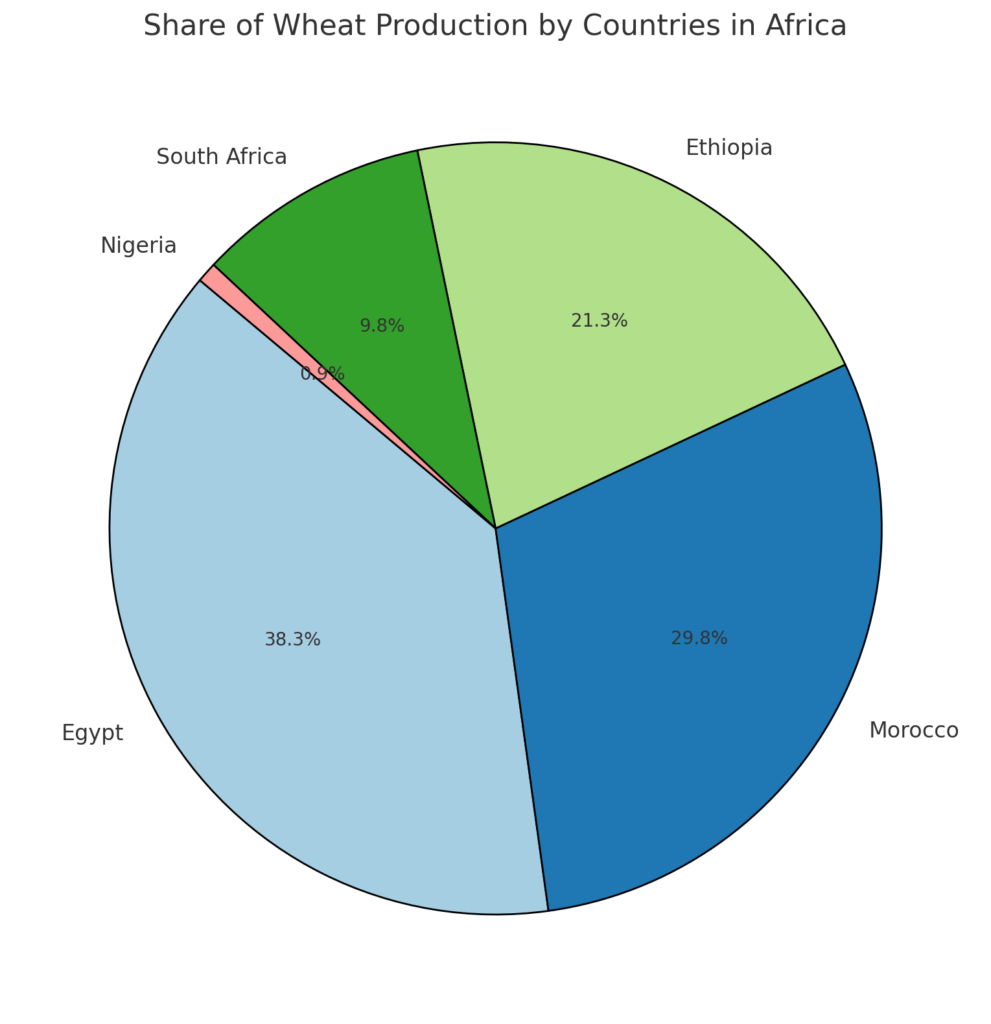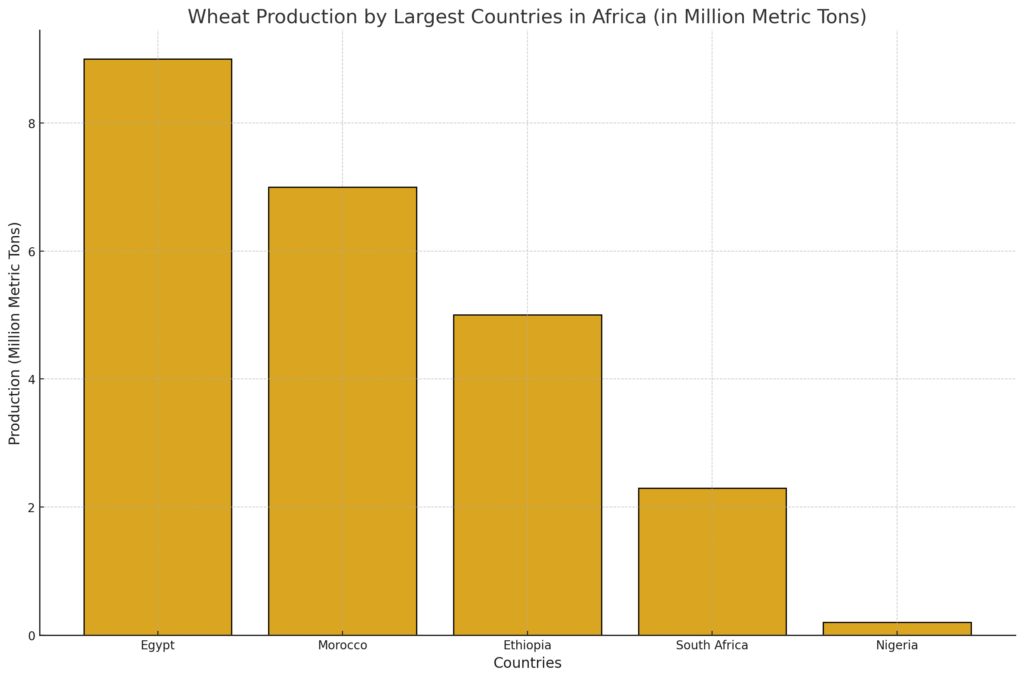
Africa’s wheat production has steadily grown over the years, with key countries emerging as significant contributors to regional food security and global markets. While much of the continent relies on wheat imports, a few nations have invested heavily in increasing local production. This article highlights the largest wheat-producing countries in Africa, their strategies, and their role in shaping the agricultural landscape.

1. Egypt: The Powerhouse of African Wheat Production
Egypt is Africa’s largest wheat producer, leveraging the fertile Nile Delta to sustain its vast agricultural sector.
Key Highlights:
- Annual Production: Over 9 million metric tons.
- Cultivation Areas: Nile Delta and Upper Egypt.
- Government Support: Subsidized wheat prices encourage local production.
- Challenges: Heavy reliance on irrigation and water-intensive farming methods.
Egypt’s strategic focus on wheat production is driven by its need to reduce dependence on imports and maintain food security for its growing population.
2. Ethiopia: A Rising Wheat Producer
Ethiopia is one of Africa’s fastest-growing wheat producers, supported by government initiatives and innovative farming practices.
Key Highlights:
- Annual Production: Approximately 5 million metric tons.
- Key Regions: Oromia and Amhara.
- Modernization: Expanding irrigated wheat farming to reduce reliance on rainfall.
- Export Ambitions: Ethiopia aims to become self-sufficient and an exporter by 2030.
The Ethiopian government’s ambitious wheat expansion plan has made the country a notable player in the African wheat industry.
3. South Africa: A Balance of Production and Imports
South Africa has a well-established wheat industry, balancing local production with significant imports to meet demand.
Key Highlights:
- Annual Production: Around 2.3 million metric tons.
- Main Regions: Western Cape and Free State.
- Agricultural Practices: Highly mechanized and efficient farming methods.
- Market Role: South Africa’s wheat industry supplies both domestic and regional markets.
South Africa’s advanced agricultural infrastructure ensures steady wheat production despite varying climate conditions.
4. Morocco: A Leader in North African Wheat Production
Morocco’s wheat industry is a cornerstone of its agricultural economy, with government programs supporting production.
Key Highlights:
- Annual Production: Approximately 7 million metric tons (including durum and soft wheat).
- Farming Regions: Souss-Massa and Tadla-Azilal.
- Subsidies: Government subsidies encourage wheat cultivation and farmer support.
- Climate Challenges: Droughts significantly affect yields.
Morocco’s wheat sector is pivotal to its food security, even as it tackles water scarcity and climate variability.
5. Nigeria: An Emerging Wheat Producer
Nigeria is making strides in wheat production, aiming to reduce its reliance on imports.
Key Highlights:
- Annual Production: About 200,000 metric tons (and growing).
- Key Initiatives: Government programs to expand wheat farming in northern regions.
- Challenges: Limited irrigation infrastructure and inconsistent yields.
- Future Goals: Plans to become self-sufficient in wheat production by 2030.
Nigeria’s potential for growth in wheat farming is significant, supported by public-private partnerships and increased investments.

Factors Driving Wheat Production in Africa
- Government Policies: Subsidies and support programs encourage wheat cultivation.
- Innovation: Adoption of high-yield and drought-resistant wheat varieties.
- Global Partnerships: Collaborations with international agricultural organizations boost resources and expertise.
Challenges Facing Africa’s Wheat Industry
- Climate Change: Erratic rainfall and rising temperatures impact yields.
- Infrastructure Gaps: Limited irrigation and storage facilities.
- Dependence on Imports: Many countries rely heavily on imported wheat, making them vulnerable to global price fluctuations.
Opportunities for Growth
- Irrigated Farming: Expanding irrigation systems can mitigate reliance on rainfall.
- Technology Integration: Smart farming methods can improve efficiency and yields.
- Regional Cooperation: Trade agreements can strengthen intra-African wheat markets.
Conclusion
Africa’s largest wheat producers—Egypt, Ethiopia, South Africa, Morocco, and Nigeria—are making significant strides in boosting local production and enhancing food security. With investments in technology, irrigation, and policy support, the continent has the potential to reduce its reliance on imports and emerge as a key player in global wheat production.



